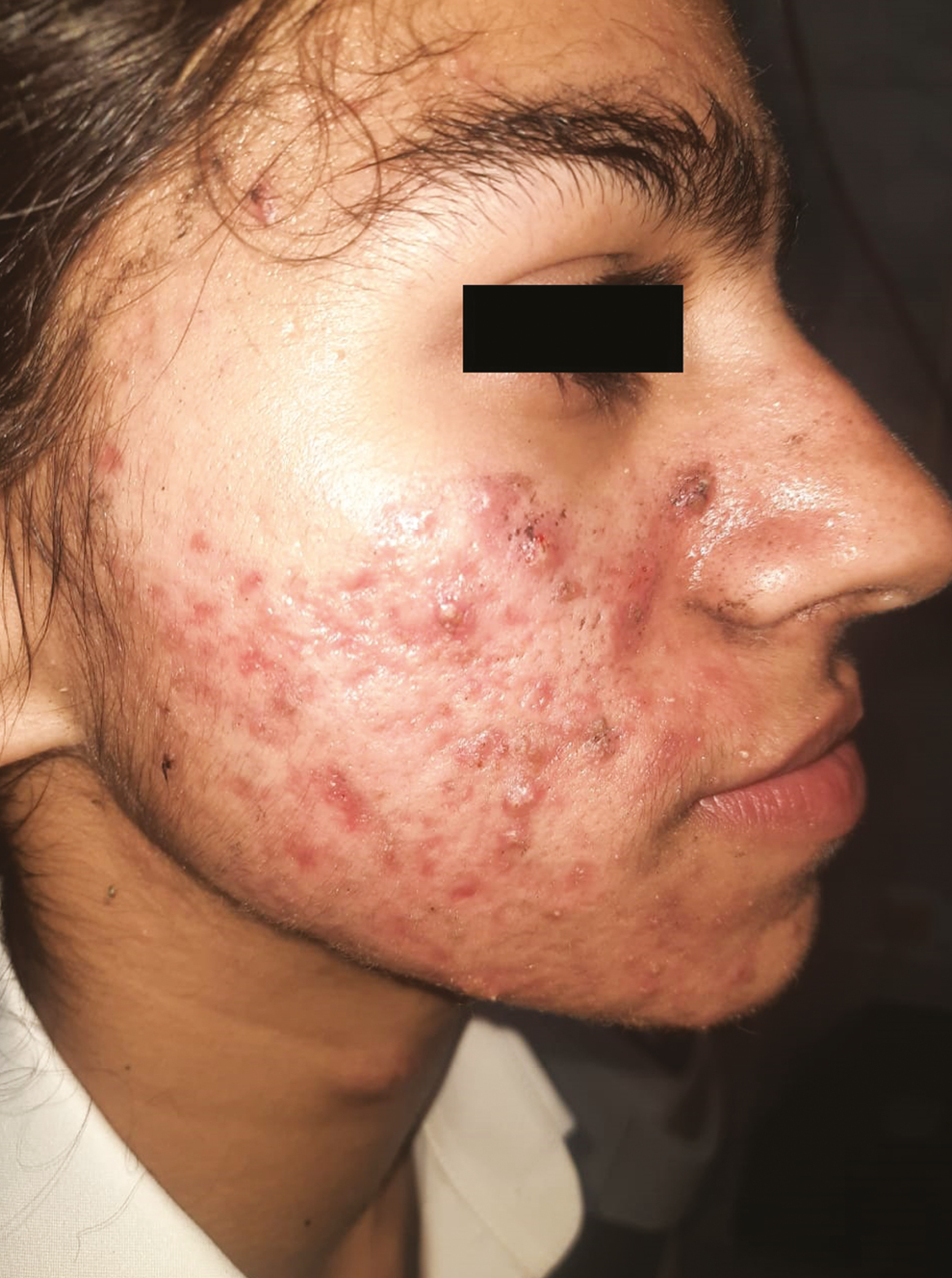Translate this page into:
Laser Carbon Peel: New Armamentarium for Inflammatory Acne
Address for correspondence: Dr. Debdeep Mitra, Department of Dermatology, Command Hospital Air Force, Bengaluru 560007, Karnataka, India. E-mail: debdeep5000@gmail.com
This article was originally published by Wolters Kluwer - Medknow and was migrated to Scientific Scholar after the change of Publisher.
Abstract
Abstract
There is an increasing interest in procedures to improve skin quality in acne patients with a short downtime. Off late, carbon peel laser technique which uses topical carbon suspension combined with Q-switched Nd:YAG laser treatment has gained popularity. The main advantages of this procedure are easy to perform and it requires less than 30 minutes.
Keywords
Acne
carbon peel
Q switched laser
There is an increasing interest in procedures to improve skin quality in acne patients with a short downtime. In the last few years, carbon peel laser technique which uses topical carbon suspension combined with Q-switched Nd:YAG laser treatment has gained popularity.[12] Subsequently, the technique has been extended to treat facial pores and acne vulgaris. Acne is a common chronic debilitating skin disease involving blockage and/or inflammation of pilosebaceous units. It is conventionally treated with a variety of topical and oral therapies with a number of significant side effects. An evolving understanding of laser-tissue interactions involving gram-positive Cutibacterium acnes-produced porphyrins, and the development of infrared nonablative lasers to target sebaceous glands, has lead to the development of an escalating number of laser, light and radiofrequency devices for acne. Used as monotherapy or in combination, these devices are showing promise as a method to clear acne in a convenient, non-invasive manner, though there remains a clear need for long-term data and randomized, blinded studies.
The procedure involves application of a carbon lotion on the face for a total of 20 min. The first pass is given using quasi-long pulse (300 μs) low fluence (1.2–1.6 J/cm2) 1064 nm Q-Switched NdYAG laser with a large spot size of 8 mm. Then the Q switched mode at 5 ns is given as a second pass. Thereafter two additional passes of laser toning are given (1064 Q switched 5 ns pulse Nd-YAG low fluence of 1.2 J/cm2). Carbon acts as a photo enhancer and settles down in the pores. 300 μs micropulsed mode causes gradual heating of the carbon particles. This conducted heat energy stimulates the epidermis and dermis and kills the C. acnes. 5 ns Q switched mode results in instantaneous blasting of carbon particles. So the effect of this external chromophore which is carbon in this case, absorbs the laser energy and converts to thermal energy. The quasi long pulse helps in killing the bacteria and the low fluence laser toning helps in skin rejuvenation by neo collagenosis and treatment of skin pores.
We report 20 cases with inflammatory acne and all patients had very satisfying results with just one session of laser carbon peel. No other systemic or topical therapy was initiated during the course of leaser treatment and its observation period. The index case with before procedure image is shown in Figure 1 and 15 days post-procedure is shown in Figure 2. The main advantages of this procedure are easy to perform and it requires a procedure time of less than 30 min. There is no bleeding, crusting or scabbing. Minimal downtime with no post inflammatory hyperpigmentation makes this the procedure of choice for inflammatory acne. This procedure can certainly be combined with other minimally invasive procedures. However, randomized control trials are needed to validate this as a modality of choice.

- Pre-procedure photograph

- Post-procedure photograph after 15 days
Declaration of patient consent
The authors certify that they have obtained all appropriate patient consent forms. In the form the patient(s) has/have given his/her/their consent for his/her/their images and other clinical information to be reported in the journal. The patients understand that their names and initials will not be published and due efforts will be made to conceal their identity, but anonymity cannot be guaranteed.
Financial support and sponsorship
Not applicable.
Conflicts of interest
There are no conflicts of interest.
REFERENCES
- Carbon peel laser technique to improve skin quality: Back to science! Dermatol Pract Concept. 2020;10:e2020113.
- [Google Scholar]
- Prospective randomized controlled clinical and histopathological study of acne vulgaris treated with dual mode of quasi-long pulse and Q-switched 1064-nm Nd:YAG laser assisted with a topically applied carbon suspension. J Am Acad Dermatol. 2012;66:626-33.
- [Google Scholar]






